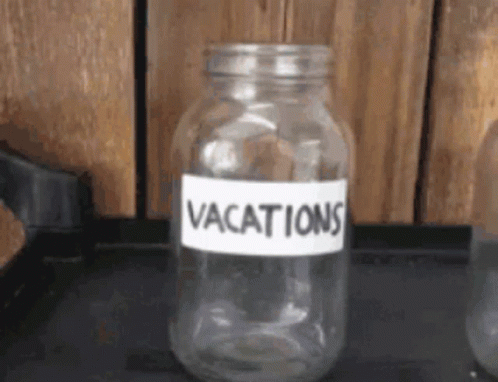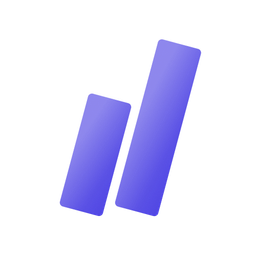Understanding Debt Through Rich Dad Poor Dad: Lessons for Financial Freedom
Learn Robert Kiyosaki’s perspective on debt from "Rich Dad Poor Dad," and how it can be leveraged wisely.

Debt is a concept that affects nearly every adult at some point in their life. Whether it’s student loans, credit card debt, mortgages, or business loans, most people will encounter debt in one form or another. What separates those who struggle financially from those who thrive often comes down to how they understand and manage debt. One book that has transformed the way people think about debt is Robert T. Kiyosaki’s Rich Dad Poor Dad.
In this blog, we’ll dive deep into how Rich Dad Poor Dad addresses the topic of debt and how understanding the difference between good debt and bad debt can lead to financial freedom. We’ll explore key concepts from the book, discuss how Kiyosaki's two "dads" differ in their approach to debt, and share practical tips for managing and leveraging debt for financial success. Lastly, we’ll recommend additional resources, including Rich Dad Poor Dad summaries on Tales.so, for readers who want to further explore Kiyosaki’s philosophy on money and wealth-building.
Table of Contents
- Overview of Rich Dad Poor Dad
- The Concept of Debt in Rich Dad Poor Dad
- Good Debt vs. Bad Debt: The Core Principle
- Rich Dad’s Approach to Debt
- Poor Dad’s View on Debt
- How to Manage Debt Smartly
- Books and Resources for Understanding Debt
- Exploring More with Tales.so
- Conclusion
Overview of Rich Dad Poor Dad
Rich Dad Poor Dad, first published in 1997, is a personal finance book by Robert T. Kiyosaki that has sold millions of copies worldwide. The book contrasts the financial philosophies of two father figures in Kiyosaki’s life: his biological father (the "poor dad") and his best friend’s father (the "rich dad").
The central theme of the book revolves around how each “dad” views money, investing, and wealth-building. While the poor dad believes in working hard, saving money, and avoiding risk, the rich dad advocates for making money work for you through investments, understanding taxes, and leveraging debt.
One of the key takeaways from the book is that financial success doesn’t necessarily come from earning a high income but from managing money wisely, building assets, and making smart investments. Debt plays a significant role in this journey.
The Concept of Debt in Rich Dad Poor Dad

Debt is one of the central themes of Rich Dad Poor Dad, but Kiyosaki introduces a concept that is crucial to understanding how to use debt effectively: not all debt is bad. Most people grow up thinking that debt is something to be avoided, as it can lead to financial hardship. However, Kiyosaki argues that there is a key distinction between “good debt” and “bad debt,” and learning how to leverage good debt is critical to building wealth.
Kiyosaki’s two "dads" offer drastically different perspectives on debt:
- Poor Dad sees debt as a burden, something that should be avoided at all costs.
- Rich Dad, on the other hand, views debt as a tool that can be used to generate wealth if managed correctly.
Good Debt vs. Bad Debt: The Core Principle
One of the key lessons in Rich Dad Poor Dad is understanding the difference between good debt and bad debt. According to Kiyosaki, the way you use debt can either help you achieve financial freedom or lead to financial ruin.
What is Bad Debt?
Bad debt is any form of debt that is used to purchase liabilities—things that do not generate income and often depreciate in value. Common examples include:
- Credit card debt used to purchase consumer goods (clothes, gadgets, etc.)
- Auto loans for personal vehicles
- High-interest personal loans for non-investment purposes
Bad debt drains your financial resources because you’re paying interest on things that don’t contribute to your income or wealth-building efforts. People with bad debt often struggle to get ahead because they are constantly repaying loans for things that do not improve their financial situation.
What is Good Debt?
Good debt, in contrast, is debt that is used to purchase assets—things that generate income or appreciate over time. Examples of good debt include:
- A mortgage on an income-producing property (rental income covers the loan)
- A business loan to start or grow a business that generates revenue
- Low-interest student loans for education that leads to a higher-paying career (if done wisely)
Kiyosaki’s philosophy is that good debt, when managed properly, can be a powerful tool for creating passive income and building wealth. Good debt allows you to leverage other people’s money (OPM) to invest in assets that can appreciate or generate cash flow.
Rich Dad’s Approach to Debt
Rich Dad is the character in Rich Dad Poor Dad who represents Kiyosaki’s mentor—his friend’s father. Rich Dad views debt as a tool that, when used properly, can help people get ahead financially.
Using Debt as Leverage
One of Rich Dad’s core lessons is that the wealthy use leverage—which often means debt—to grow their wealth. Leverage allows you to control larger assets without having to use all your own capital. For example, by taking out a mortgage to buy a rental property, you can control a high-value asset that generates income without having to pay for it entirely upfront.
Rich Dad’s belief is that the key to financial success is not to avoid debt, but to use it intelligently. By borrowing money to invest in assets that generate cash flow (such as real estate or businesses), you can grow your wealth more rapidly than if you were relying solely on your own capital.
Investing in Cash-Flowing Assets

In Rich Dad Poor Dad, Rich Dad stresses the importance of investing in assets that produce cash flow. For instance, buying rental properties using debt (i.e., mortgages) can result in positive cash flow if the rental income exceeds the mortgage payments and other expenses.
- Example: If you take out a mortgage to buy a rental property and your tenants’ rent covers the mortgage, taxes, and maintenance costs, the property is generating cash flow. Over time, as you pay down the mortgage and the property value appreciates, you build equity, further increasing your wealth.
By using debt strategically to purchase assets that put money in your pocket, you are able to build wealth over time. Rich Dad argues that this is how wealthy people use debt differently from those who remain in the middle class.
Poor Dad’s View on Debt
In contrast to Rich Dad’s approach, Poor Dad, who represents Kiyosaki’s biological father, has a more traditional and cautious view of debt. He believes that debt is dangerous and should be avoided whenever possible.
Fear of Debt
Poor Dad’s primary attitude toward debt is fear. Like many people, he grew up believing that debt is inherently risky and that taking on debt could lead to financial ruin. As a result, he avoids taking on loans and prefers to live within his means, paying for things with cash rather than credit.
While this approach may prevent financial disaster, Kiyosaki argues that it also limits Poor Dad’s potential for wealth-building. By avoiding debt entirely, Poor Dad misses out on opportunities to invest in assets that could provide passive income and financial growth.
Living Paycheck to Paycheck
Poor Dad’s avoidance of debt and his focus on traditional career success leads him to live paycheck to paycheck, despite having a good job. He emphasizes working hard, getting a stable job, and saving money. However, without leveraging debt to acquire assets, Poor Dad’s strategy leaves him financially vulnerable.
Even though he is cautious, he still faces liabilities such as mortgage payments, car loans, and everyday expenses, without generating significant passive income.
How to Manage Debt Smartly
If you want to follow the financial principles laid out in Rich Dad Poor Dad, learning how to manage debt is crucial. Here are some key strategies for managing debt effectively:
1. Prioritize Paying Off Bad Debt
The first step to achieving financial freedom is getting rid of bad debt. If you have high-interest credit card debt, car loans, or personal loans that are draining your resources, focus on paying those off as quickly as possible.
In the avalanche method, you target the highest-interest debts first, which saves more money on interest over time.
2. Leverage Good Debt for Investments
Once you’ve eliminated bad debt, you can begin leveraging good debt to invest in income-generating assets. This could mean:
- Taking out a mortgage to buy rental property
- Getting a business loan to start a company or invest in a franchise
- Borrowing to invest in stocks or other appreciating assets (though this is a more advanced and riskier strategy)
Always ensure that your investments produce positive cash flow, meaning the returns are higher than the cost of the debt.
3. Build Assets, Not Liabilities
A core lesson in Rich Dad Poor Dad is to focus on acquiring assets, not liabilities. An asset puts money in your pocket, while a liability takes money out. Examples of assets include:
- Real estate that generates rental income
- Businesses that produce profits
- Stocks, bonds, and other investments that grow in value over time
Liabilities, on the other hand, include things like personal vehicles, credit card debt, and luxury items that depreciate in value.
4. Focus on Financial Education
Perhaps the most important lesson from Rich Dad Poor Dad is the emphasis on financial education. Understanding how money works and continuously learning about investing, taxes, and debt management will put you ahead in the long run. The more you know about using debt strategically, the better positioned you’ll be to build wealth.
Further Reading:

Books and Resources for Understanding Debt
If you want to dive deeper into understanding debt, finances, and how to achieve financial freedom, here are a few books and resources worth exploring:
1. "The Total Money Makeover" by Dave Ramsey
Dave Ramsey’s The Total Money Makeover offers a step-by-step guide to getting out of debt and living debt-free. Ramsey emphasizes the importance of financial discipline and avoiding debt altogether, making it a great resource for those struggling with bad debt.
2. "Debt: The First 5,000 Years" by David Graeber
This book offers a historical perspective on the concept of debt, exploring how it has shaped societies throughout history. While it’s not a personal finance guide, it provides valuable insights into how debt has influenced economics and culture.
3. "The Millionaire Next Door" by Thomas J. Stanley and William D. Danko
This classic personal finance book studies the habits of millionaires, emphasizing frugality, discipline, and smart use of debt. It’s a great read for those interested in how everyday people achieve financial success without flashy lifestyles.
Further Reading:

Exploring More with Tales.so
If you’re interested in exploring more financial education resources or learning about Rich Dad Poor Dad and similar books in a concise format, check out Tales.so. This platform offers:
- Detailed Summaries: Get key takeaways from essential personal finance books without having to read them cover to cover.
- Actionable Insights: Learn how to apply the lessons from these books to your own financial journey.
- Wide Selection: Explore summaries of books on debt, investing, financial freedom, and more.
Tales.so can help you quickly absorb important financial knowledge and start applying it to your life.
Conclusion
Rich Dad Poor Dad has become a classic in the personal finance world, and for good reason. Its lessons on debt, wealth-building, and financial education have helped millions of people shift their mindsets around money. Understanding the difference between good debt and bad debt is crucial to building wealth and achieving financial independence.
Whether you’re just beginning your financial journey or looking to refine your investment strategies, remember that debt can be a powerful tool when used wisely. Prioritize paying off bad debt, leverage good debt to acquire income-generating assets, and continue educating yourself on how to manage your money effectively. For further reading, don’t forget to explore Tales.so to continue your financial education.
By applying the lessons from Rich Dad Poor Dad, you can transform your relationship with debt and move toward a future of financial freedom.




